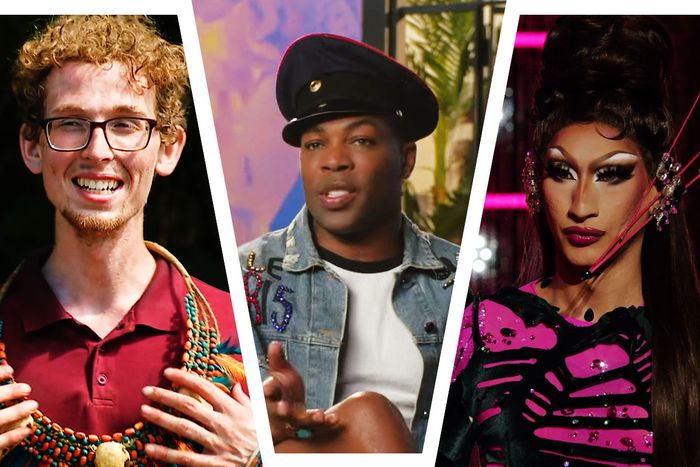
It was all about the toe. During episode two of season 45 of Survivor, Dee, a contestant on the Reba tribe, introduced viewers and her fellow Rebas to her long, big toe. “My toes are pretty,” Dee told the cameras. “It’s just that my big toe is abnormally longer than my other toes.” The other Rebas poked fun at her, cracking up at the idea of her footprints. Including this scene early in the season serves multiple functions: It endears the audience to Dee, it shows off the tribe dynamic among the Rebas, and it ends up forecasting a later immunity-challenge win in a challenge where extra toe grip was an asset. It may not seem especially notable, but to superfans of Survivor, the toe scene was worth adulating. For the first time in recent years, the audience could finally breathe. The mundane was back.
That’s because this season, every episode of Survivor was extended from its usual hour-long (with commercials) run time to 90 minutes, allowing for scenes about long toes. It was a gambit — a 30-minute difference between asking for a portion of someone’s Wednesday and asking to be the focus of their night. But to fans, it felt like a gift. In the so-called New Era of Survivor, post–season 40, producers overran their iconic show with twists and advantages to the point where it felt like little else received significant airtime. The edit spent so much time explaining rules that there wasn’t space for what Survivor fans actually love — watching tribe dynamics unfold, players building relationships, and, of course, toe talk. If you wanted to understand the characters making moves on your TV screen each week, you had to seek out the “Secret Scenes” CBS posted on their website each week. Not ideal!
Survivor fans have celebrated the longer episodes. The Survivor Reddit has a cavalcade of new posts each week about how nice it is to get to know the players more, and Insider correctly declared that the extended length has brought the “magic back” to the show. Season 45 ratings have been solid (averaging about 5 million viewers each week), and while my dad thinks the episodes are a little too long, he’s also said that about every movie we’ve ever seen together, and he still watches every week. The choice to extend episodes of Survivor, alongside its longtime sister show the Amazing Race, was made in May, following the Writers Guild of America going on strike May 1. CBS, like other networks and studios, had to come up with creative ways to temporarily fill their programming, but this new timeslot could be permanent; CBS has since confirmed that season 46 will continue with the change.
But Survivor’s success story came after an episode-length fiasco on a different Paramount network. RuPaul’s Drag Race, an Emmy-winning, culture-defining sensation, moved from Logo to VH1 in season nine and began airing 90-minute episodes in season ten, before ending up at MTV for season 15. The show, which in its early days was a tightly edited masterclass in quick pacing, had grown accustomed to this slower pace. Then, in January, MTV decided it wanted something different. In a funhouse mirror reflection of Survivor’s success story, the network cut down Drag Race’s airtime to make way for a show nobody asked for, and, it turned out, nobody wanted. Specifically, the Todrick Hall– and Brad Goreski–starring The Real Friends of WeHo. The goal of the pairing was to make the two shows, along with the Drag Race spinoff Untucked, into a “destination night” for gay viewers.
Drag Race’s audience rejected this change in record numbers, with viewership for Real Friends immediately guttering and fan outrage reaching a point where Hall felt compelled to respond on social media. The tenor of the outrage against Real Friends had a bite behind it — it wasn’t just that Drag Race was shortened; it was that it was shortened to prioritize six cis gay men, multiple of whom fell into the category of “influencers,” over the 16 drag queens competing in an already wildly successful franchise. There was a sense of justice behind rejecting the change; turning off the TV felt like activism. The message from the audience was clear: We aren’t dedicating our night to the nebulous category of “gay shows.” We’re dedicating our night to Drag Race.
By the end of the season, Drag Race returned to airing 90-minute episodes and Paramount+ later released a full version of the season with extended versions of originally shortened episodes. For MTV, it was a catastrophic attempt at pandering and an utter failure surrounding Drag Race, which, after going from the smallest of shows to a globe-spanning sensation, is one of the great TV success stories of the past 20 years.
In an age where real-time TV viewership, both on network and on cable, is dwindling and its cultural cache is even worse (The Good Doctor is a hit show with so little cultural footprint it became a meme earlier this year), reality competition is one of the few genres that can still turn TV into a live cultural event. Because the episodes are structured to make spoilers not just disappointing but entirely episode-ruining, the impetus to watch with your friends and the rest of what’s left of a “Twitter community” in real time remains strong. It’s why Netflix was so enthusiastic about positioning Love Is Blind season four as its real foray into live entertainment after a test run with a Chris Rock special — these are audiences that mobilize, and the nature of these shows invites discussion. Their online communities are enormous, entire livelihoods are made by discussing the show’s every move, and the contestants remain microcelebrities well after their time on TV has ended.
It should be no surprise, then, that the lesson of reality-TV episodes in 2023 was “more is more.” But this doesn’t mean “more shows.” A reality-TV block, or “destination night,” is entirely feasible. Fans are altogether willing to dedicate their night to the shared experience of live-watching a reality competition. What’s not feasible is the introduction of more shows at the cost of others. Give the people their 90 minutes!


